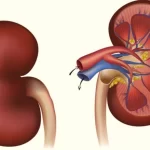Adho Mukha Svanasana
Adho Mukha Svanasana (Yoga Downward Facing Dog Pose) is derived from the Sanskrit word “Adha” which means “down”, “Mukha” which means “face” and Swana means “dog”, and Asan means “posture”. This posture looks like a dog when he bends forward. There are many amazing benefits of Adho Mukha Svanasana that make it extremely important to practice it every day.
Perform these asanas before performing Adho Mukha Svanasana
- Phalakasana
- Uttanasana
Method of Adho Mukha Svanasana
- Lie on your stomach on a yoga mat. After this, while stretching the breath, lift the body with your feet and hands and make a table-like shape.
- While exhaling, slowly raise the hips upwards. Keep your elbows and knees tight. Decide that the body is inverted in the shape of ‘V’.
- During the practice of this asana, shoulders and hands remain in a straight line. While the feet will remain in line with the hips. Keep in mind that your ankles will be outward.
- Now press your hands down towards the ground and try to pull the neck longer. Keep your ears touching the inner part of your hands and try to focus your eyes on the navel.
- In this position, stop for a few seconds, and after that kneel on the ground and come back to the table-like position again.
Perform this asana after performing Adho Mukha Svanasana
- Sirsasana
- Uttanasana
Caution
Adho Mukha Svanasana should be practiced in the morning. But if you are doing this asana in the evening, then you must eat food at least 4 to 6 hours before. It is also important to make sure that you have defecated before doing the posture and the stomach is empty.
It is better to consult a professional trainer or medical practitioner before practicing Downward Facing Dog Pose. Avoid practicing this asana if you have any of these problems. like,
- Carpal tunnel syndrome
- High blood pressure
- A detached retina
- A dislocated shoulder
- Weak eye capillaries
- Diarrhea
- This creates stress on the spine, thighs, abdominal areas, so women with pregnancy or people who have chronic back or shoulder injuries should avoid it.
- People who have high blood pressure or any infection related to the ear or nose should also not practice it.
Benefits
- Regular exercise reduces back pain.
- Strengthens hands, feet, spine, shoulders, and other body parts.
- Regulates blood circulation which improves the likelihood of heart-related problems and blood pressure.
- Stretches the spine and the back of the body, which benefits.
- It helps in toning the palms and feet.
- Improves the digestive system by suppressing the digestive organs.






